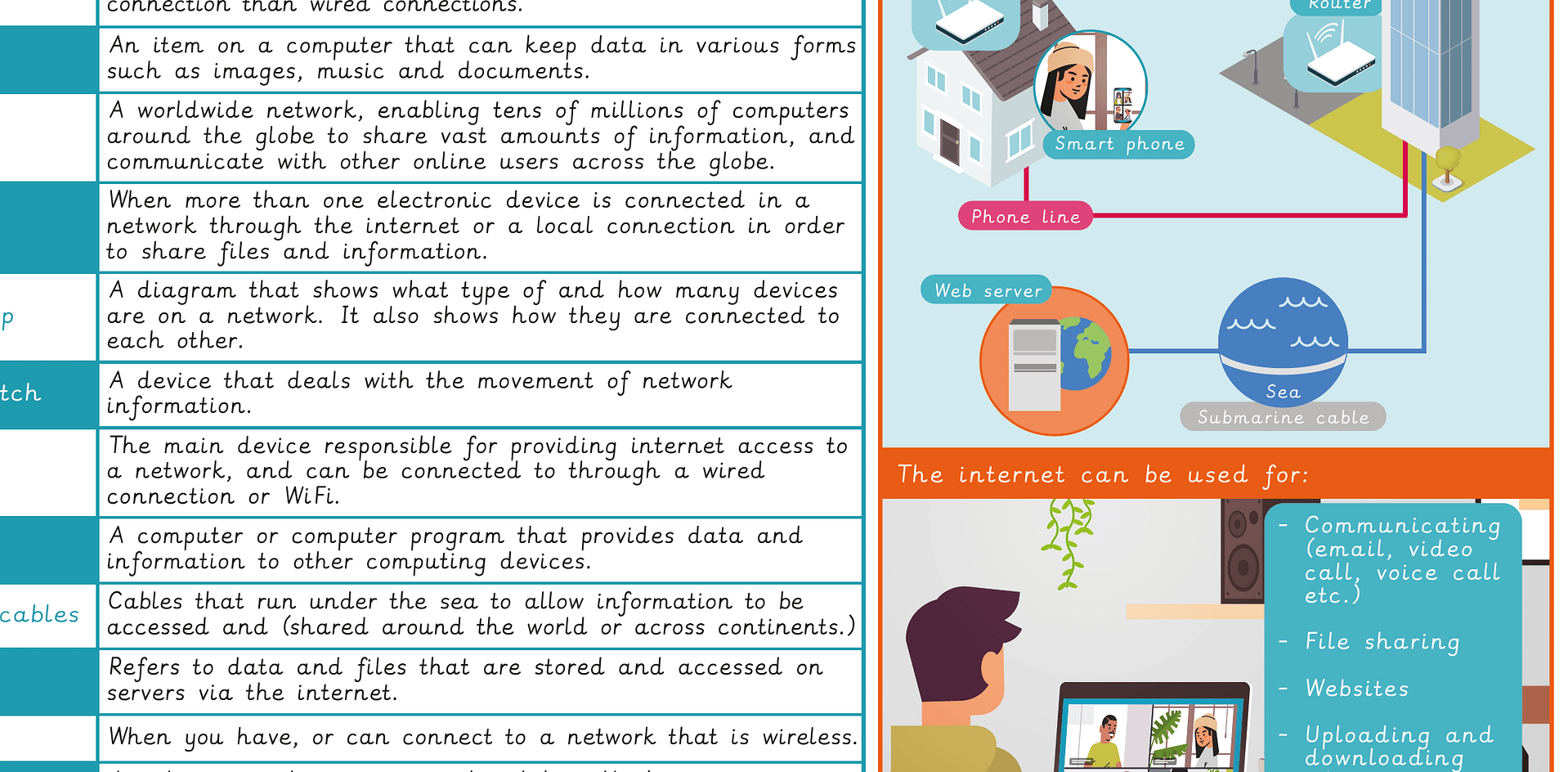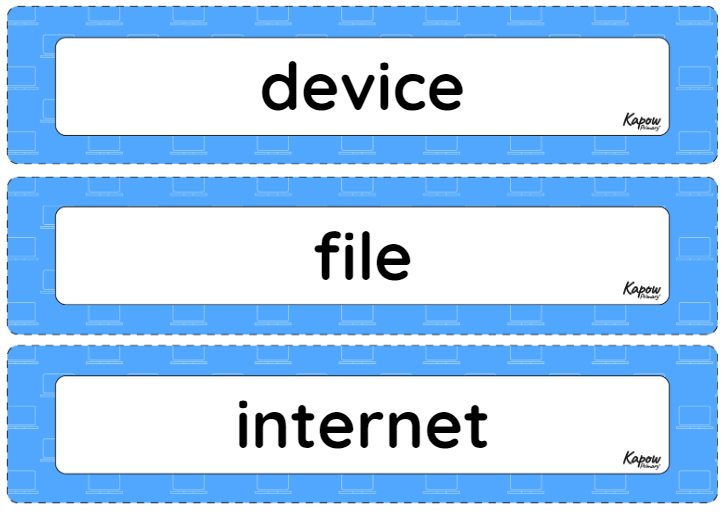Computing systems and networks 1: Networks
Introduction to the concept of networks, learning how devices communicate. From identifying components, learn how information is shared and deepen this understanding by exploring examples of real-world networks
The Curriculum and Assessment Review final report has been released. We’re reviewing the recommendations and planning for future updates. Learn more
- Subjects >
- Computing >
- Key stage 2 >
- Year 3 >
-
Computing systems and networks 1: Networks
Unit outcomes
Pupils who are secure will be able to:
- Recognise that a network is two or more devices connected and its purpose.
- Identify key components that make up the school’s network.
- Explain the difference between wired and wireless connections.
- Recognise that files are saved on a server.
- Understand the role of the server in a network when requesting a website.
- Identify parts of a website’s journey to reach your computer.
- Recognise that routers connect to send information.
- Understand that data is broken into packets.
Suggested prior learning
Computing systems and networks 1: What is a computer?
Get startedLessons
Lesson 1: What is a network?
- To recognise what a network is.
Lesson 2: A file’s journey
- To demonstrate how information moves around a network.
Lesson 3: How a website works
- To demonstrate how a website works.
Lesson 4: Routers
- To explore the role of a router.
Lesson 5: What is packet data?
- To identify the role of packet data.
Related content
Resources
Unit resources

Computing
Knowledge organiser – Computing Year 3: Computing systems and networks 1: Networks
Aimed at pupils, a single page which gives key facts and definitions from the unit "Computing systems and networks 1:…

Computing
Vocabulary display – Computing Y3: Networks
A display version of the vocabulary from the Networks unit.
Cross-curricular opportunities
English: Spoken language
Suggested next steps
Computing systems and networks 2: Emailing
Get startedFor copyright reasons, you may not screenshot this page.
Press esc to exit

